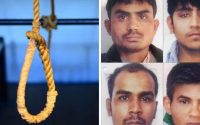$100 Website Offer
Get your personal website + domain for just $100.
Limited Time Offer!
Claim Your Website NowMadras High Court gets all-woman first bench for 1st time in 135 years
Source:- timesofindia.indiatimes.com
CHENNAI: For the first time in the 135-year history of the Madras high court, the prestigious first bench has become an all-woman bench.
Headed by Chief Justice Indira Banerjee, it has Justice Bhavani Subbaroyan, who was sworn in on Wednesday , as junior judge.
Justice Indira Banerjee herself is the only second woman chief justice of the high court -the first one being Justice Kanta Kumari Bhatnagar, who held the post for more than five months from June 1992.
“It was a pleasant sight to watch the judges in action, and it is bound to inspire the large number of our women colleagues as well as young girls joining the legal profession and law colleges. Already , 33% of Tamil Nadu’s subordinate judiciary is manned by women,” said senior advocate and former additional solicitor general of India P Wil son.
“Having an all-woman bench is a proud moment for the chartered Madras high court. It is in fact an indication of what is to come,” said advocate-activist R Santhakumari, president of the Tamil Nadu Federation of Women Lawyers and former president of Women Lawyers Association (WLA). “Though we have been demanding at least one-third representation for women on the bench, it now looks even 50% is achieveable, that too without any formal reservation or quota,” she said with a hint of pride. With seven women judges on its rolls, the chartered Madras high court has one of the highest number of women on the bench. Overall, the court has 54 judges, against the sanctioned strength of 75.
At least two more are set to join the bench if the pending names are cleared for appointment as judges for the existing vacancies. The sole woman in the 27-judge Supreme Court, Justice R Banu mathi, is also from Tamil Nadu. Justice Banumathi, who joined the apex court three years ago, will be there for an other three years.
S Prabakaran, co-chair man of the Bar Council of India (BCI) and president of the Tamil Nadu Advocates Association (TNAA), said that the legal profession, just as any other promising professions such as software, architecture, medicine and accountancy , has been witnessing a steady jump in the number of girls joining courses and Bar enrolment. “In the last few mass en rolments of new entrants into the profession, girls outnumbered men, and it is a welcome sign,” Prabakharan said.
“Law is a versatile profession offering a variety of options, including adversarial as well as cushy corporate posts, for girls,” Prabakaran added.



